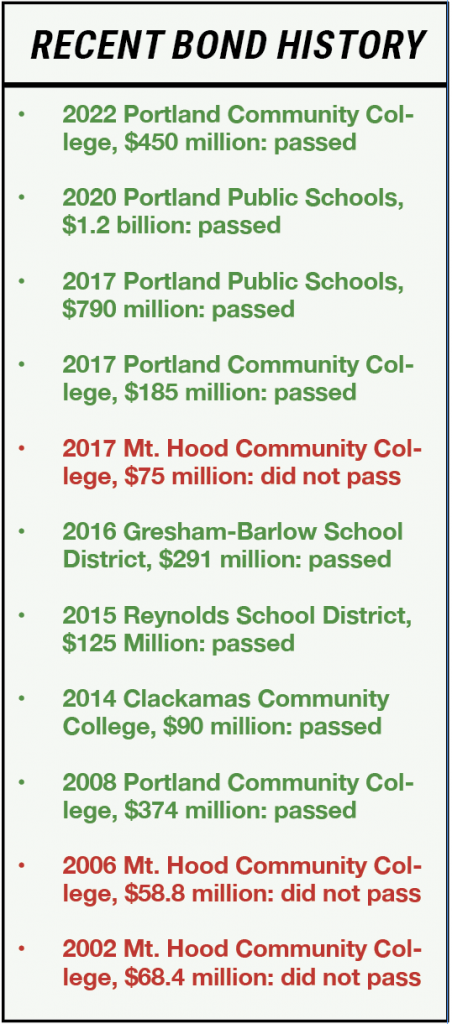MHCC Working on Bond, Could Be on the November Ballot
As we inch toward this year’s November general election, voters in East Multnomah County and a portion of Clackamas County may find a new bond measure on their ballot. Still in the planning stage is a general obligation bond for capital improvements – construction and renovation – at Mt. Hood Community College.
This isn’t the first time such a bond has been proposed. In the mid-1960s, voters approved a $6.5 million bond for the college’s initial campus construction. A similar bond was approved in 1974. Nothing has followed since, with a half-dozen election failures over the next four decades.
Now, the college is once again asking the surrounding community for support in passing a new bond – paid for by a modest increase in property taxes for each property owner in the large MHCC district that runs from Portland International Airport to Mount Hood itself.
With a walk through the Gresham campus, one can easily tell that the college was built in the ’60s. With its brutalist, concrete architecture and open design that relies heavily on exterior doorways and walkways, the college is due for a much-needed update. That is why the MHCC District Board of Education and college administration are preparing to send the measure to voters.
The Board’s draft plan outlines three main areas to which the proposed $131 million bond would contribute.
First, the college wants to “PREPARE students for success” with about $66 million in targeted improvements. About $9.5 million of bond money would “ fund the re-purposing of existing space to create a Center for Health Professions to improve collaboration, training, and cross-disciplinary learning,” says a bond pamphlet obtained at a recent Board meeting.
Besides the new health learning center, $25 million would be used to modernize and upgrade science labs and other classrooms.
About $31 million more would go toward security and safety improvements. Nearly half, $15 million, would bring the campus up to current standards “regarding security and emergency response.” The money would tackle the lack of security cameras, the inability to fully lock down the campus, and the limited number of ways to announce a lockdown or emergency to students.
Also, many doors must now be locked manually by staff members and cannot remotely be locked, something the funding would address.
The other $16 million would be spent retrofitting the Gresham campus to be more earthquake-ready, a major concern in the Pacific Northwest.
The draft proposal outlines $47 million to “INVEST in needed long term repairs” and more “to protect college assets.” Roughly $25 million would be used to improve student learning spaces and accommodations on campus. These improvements include renovating the student study and library spaces, as well as creating what the college calls “student activity nodes” where students have sufficient places to study and congregate.

Graphic by Andrew Hull
Given the college’s aging infrastructure, serious maintenance and repair backlogs exist. The plan would allocate $22 million for everything from roof, window, exterior, plumbing, HVAC and electrical work to removing asbestos and ramping up Information Technology. About $9 million of this funding would go to repairing parking lots, roads, sidewalks, and other utility work. As students know well, food on campus has been lacking since options were shut down due to the COVID-19 pandemic. The bond leadership team contemplates the possibility of more food services on campus, using some portion of the funding.
Finally, under the heading of “CONNECT the college with our community,” leaders have suggested $17.7 million be used to improve Mt. Hood’s athletic facilities, as well as accessibility across the entire campus.
Around $10.5 million would go towards Title IX improvements of locker rooms and the softball field and infrastructure, including the press box, concessions, and upgraded dugouts. An estimated $4 million would be allocated for construction of a retractable dome over the 50-meter outdoor swim pool in the Aquatics Center.
And lastly, $6 million would go to improving existing elevators and restrooms to accommodate all types of students and faculty needs, including single-use, all-gender or family restrooms, and lactation rooms.

Editor-in-Chief

Leave a comment